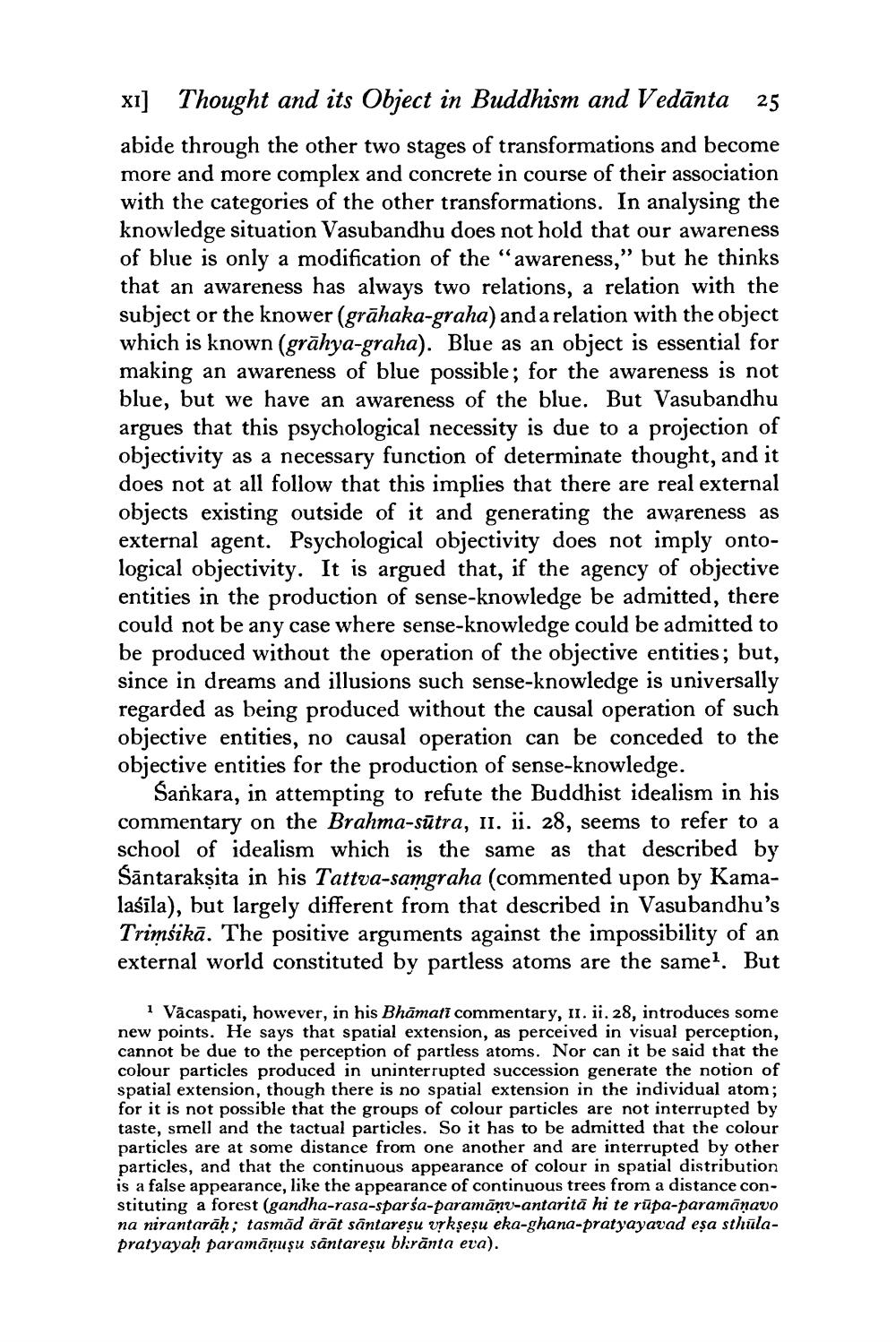________________
X1] Thought and its Object in Buddhism and Vedānta 25 abide through the other two stages of transformations and become more and more complex and concrete in course of their association with the categories of the other transformations. In analysing the knowledge situation Vasubandhu does not hold that our awareness of blue is only a modification of the "awareness," but he thinks that an awareness has always two relations, a relation with the subject or the knower (grāhaka-graha) anda relation with the object which is known (grāhya-graha). Blue as an object is essential for making an awareness of blue possible; for the awareness is not blue, but we have an awareness of the blue. But Vasubandhu argues that this psychological necessity is due to a projection of objectivity as a necessary function of determinate thought, and it does not at all follow that this implies that there are real external objects existing outside of it and generating the awareness as external agent. Psychological objectivity does not imply ontological objectivity. It is argued that, if the agency of objective entities in the production of sense-knowledge be admitted, there could not be any case where sense-knowledge could be admitted to be produced without the operation of the objective entities; but, since in dreams and illusions such sense-knowledge is universally regarded as being produced without the causal operation of such objective entities, no causal operation can be conceded to the objective entities for the production of sense-knowledge.
Sankara, in attempting to refute the Buddhist idealism in his commentary on the Brahma-sūtra, II. ii. 28, seems to refer to a school of idealism which is the same as that described by Sāntaraksita in his Tattva-samgraha (commented upon by Kamalaśīla), but largely different from that described in Vasubandhu's Trimsikā. The positive arguments against the impossibility of an external world constituted by partless atoms are the samel. But
1 Vācaspati, however, in his Bhāmati commentary, II. ii. 28, introduces some new points. He says that spatial extension, as perceived in visual perception, cannot be due to the perception of partless atoms. Nor can it be said that the colour particles produced in uninterrupted succession generate the notion of spatial extension, though there is no spatial extension in the individual atom; for it is not possible that the groups of colour particles are not interrupted by taste, smell and the tactual particles. So it has to be admitted that the colour particles are at some distance from one another and are interrupted by other particles, and that the continuous appearance of colour in spatial distribution is a false appearance, like the appearance of continuous trees from a distance constituting a forest (gandha-rasa-sparsa-paramāņu-antaritā hi te rūpa-paramāņavo na nirantarāh; tasmăd ärāt sāntareşu vşkşeşu eka-ghana-pratyayavad esa sthūlapratyayaḥ paramāņuşu sântareșu bhrānta eva).




